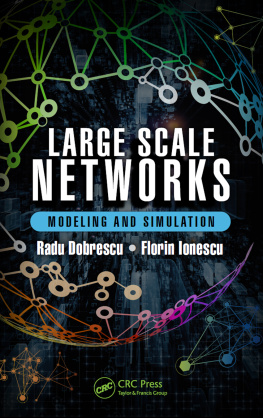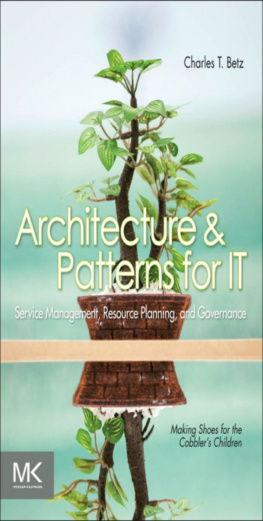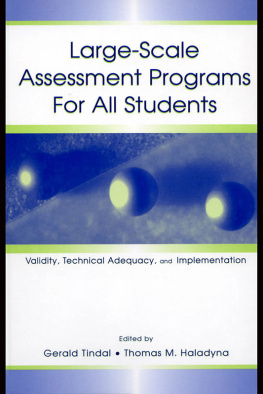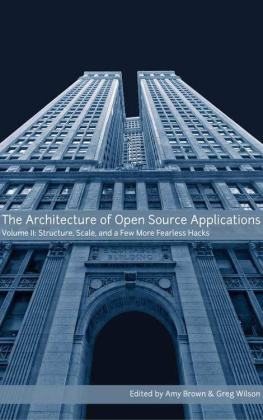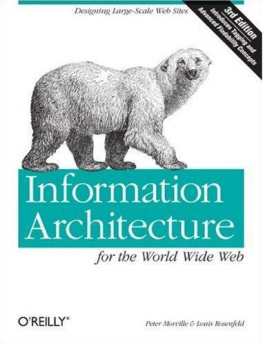John Lakos - Large-Scale C++ Volume I: Process and Architecture
Here you can read online John Lakos - Large-Scale C++ Volume I: Process and Architecture full text of the book (entire story) in english for free. Download pdf and epub, get meaning, cover and reviews about this ebook. year: 2020, publisher: Addison-Wesley, genre: Computer. Description of the work, (preface) as well as reviews are available. Best literature library LitArk.com created for fans of good reading and offers a wide selection of genres:
Romance novel
Science fiction
Adventure
Detective
Science
History
Home and family
Prose
Art
Politics
Computer
Non-fiction
Religion
Business
Children
Humor
Choose a favorite category and find really read worthwhile books. Enjoy immersion in the world of imagination, feel the emotions of the characters or learn something new for yourself, make an fascinating discovery.

- Book:Large-Scale C++ Volume I: Process and Architecture
- Author:
- Publisher:Addison-Wesley
- Genre:
- Year:2020
- Rating:3 / 5
- Favourites:Add to favourites
- Your mark:
- 60
- 1
- 2
- 3
- 4
- 5
Large-Scale C++ Volume I: Process and Architecture: summary, description and annotation
We offer to read an annotation, description, summary or preface (depends on what the author of the book "Large-Scale C++ Volume I: Process and Architecture" wrote himself). If you haven't found the necessary information about the book — write in the comments, we will try to find it.
Large-Scale C++ Volume I: Process and Architecture — read online for free the complete book (whole text) full work
Below is the text of the book, divided by pages. System saving the place of the last page read, allows you to conveniently read the book "Large-Scale C++ Volume I: Process and Architecture" online for free, without having to search again every time where you left off. Put a bookmark, and you can go to the page where you finished reading at any time.
Font size:
Interval:
Bookmark:
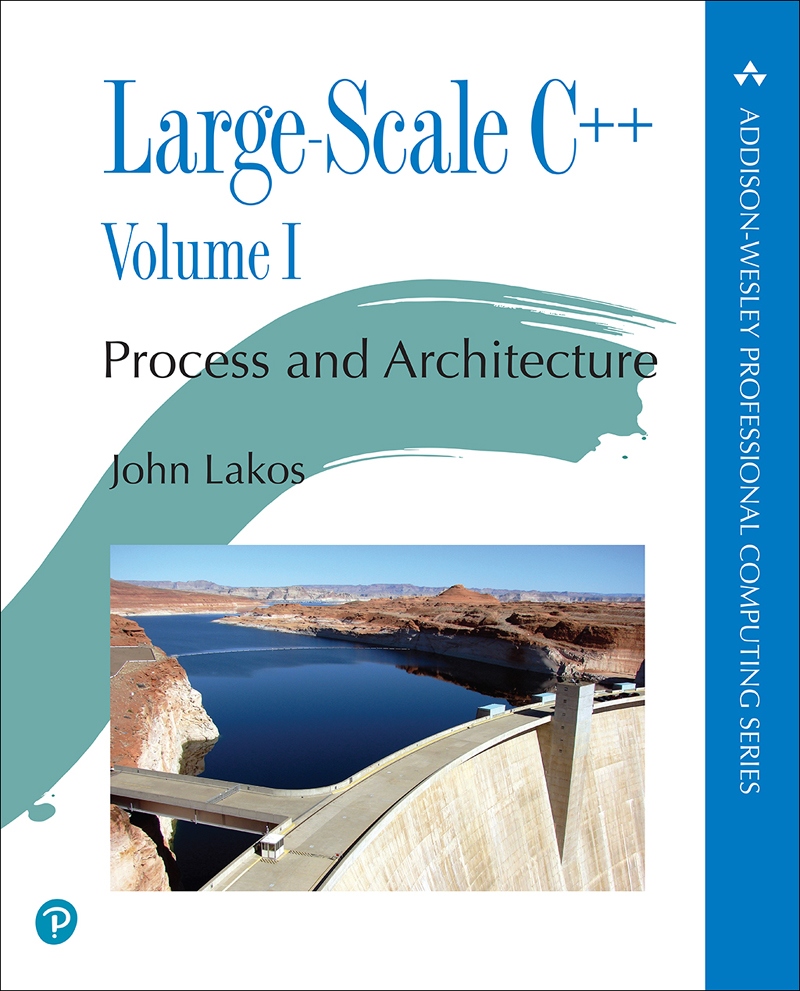
ePUB is an open, industry-standard format for eBooks. However, support of ePUB and its many features varies across reading devices and applications. Use your device or app settings to customize the presentation to your liking. Settings that you can customize often include font, font size, single or double column, landscape or portrait mode, and figures that you can click or tap to enlarge. For additional information about the settings and features on your reading device or app, visit the device manufacturers Web site.
Many titles include programming code or configuration examples. To optimize the presentation of these elements, view the eBook in single-column, landscape mode and adjust the font size to the smallest setting. In addition to presenting code and configurations in the reflowable text format, we have included images of the code that mimic the presentation found in the print book; therefore, where the reflowable format may compromise the presentation of the code listing, you will see a Click here to view code image link. Click the link to view the print-fidelity code image. To return to the previous page viewed, click the Back button on your device or app.
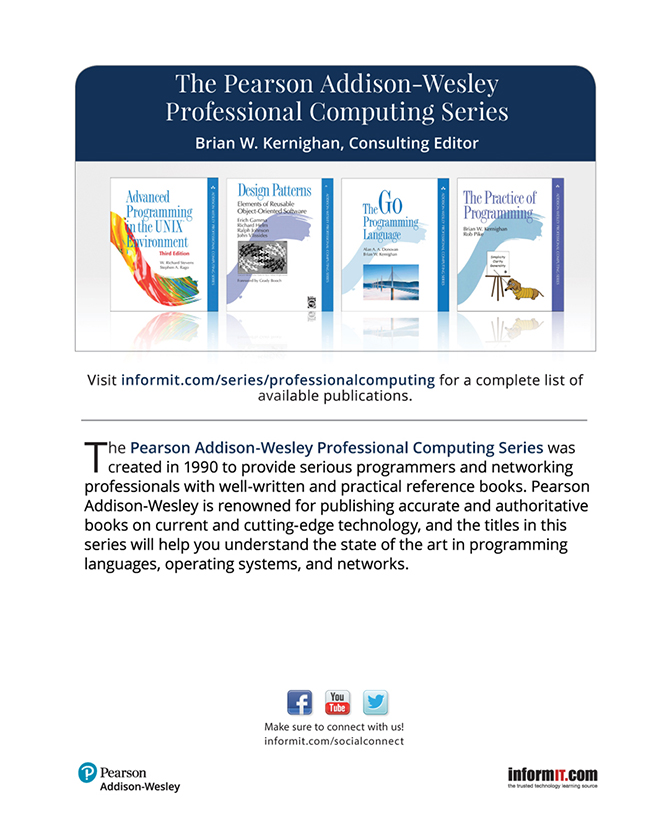
Volume I
Process and Architecture
John Lakos

Boston Columbus New York San Francisco Amsterdam Cape Town
Dubai London Madrid Milan Munich Paris Montreal Toronto Delhi Mexico City
So Paulo Sydney Hong Kong Seoul Singapore Taipei Tokyo
Many of the designations used by manufacturers and sellers to distinguish their products are claimed as trademarks. Where those designations appear in this book, and the publisher was aware of a trademark claim, the designations have been printed with initial capital letters or in all capitals.
The author and publisher have taken care in the preparation of this book, but make no expressed or implied warranty of any kind and assume no responsibility for errors or omissions. No liability is assumed for incidental or consequential damages in connection with or arising out of the use of the information or programs contained herein.
For information about buying this title in bulk quantities, or for special sales opportunities (which may include electronic versions; custom cover designs; and content particular to your business, training goals, marketing focus, or branding interests), please contact our corporate sales department at or (800) 382-3419.
For government sales inquiries, please contact .
For questions about sales outside the U.S., please contact .
Visit us on the Web: informit.com/aw
Library of Congress Control Number: 2019948467
Copyright 2020 Pearson Education, Inc.
Cover image: MBoe/Shutterstock
All rights reserved. This publication is protected by copyright, and permission must be obtained from the publisher prior to any prohibited reproduction, storage in a retrieval system, or transmission in any form or by any means, electronic, mechanical, photocopying, recording, or likewise. For information regarding permissions, request forms and the appropriate contacts within the Pearson Education Global Rights & Permissions Department, please visit www.pearson.com/permissions.
ISBN-13: 978-0-201-71706-8
ISBN-10: 0-201-71706-9
ScoutAutomatedPrintLine
To my wife, Elyse, with whom the universe rewarded me,
and five wonderful children:
Sarah
Michele
Gabriella
Lindsey
Andrew
When I wrote my first book, Large-Scale C++ Software Design (), my publisher wanted me to consider calling it Large-Scale C++ Software Development. I was fairly confident that I was qualified to talk about design, but the topic of development incorporated far more scope than I was prepared to address at that time.
Design, as I see it, is a static property of software, most often associated with an individual application or library, and is only one of many disciplines needed to create successful software. Development, on the other hand, is dynamic, involving people, processes, and workflows. Because development is ongoing, it typically spans the efforts attributed to many applications and projects. In its most general sense, development includes the design, implementation, testing, deployment, and maintenance of a series of products over an extended period. In short, software development is what we do.
In the more than two decades following Large-Scale C++ Software Design, I consistently applied the same fundamental design techniques introduced there (and elucidated here), both as a consultant and trainer and in my full-time work. I have learned what it means to assemble, mentor, and manage large development teams, to interact effectively with clients and peers, and to help shape corporate software engineering culture on an enterprise scale. Only in the wake of this additional experience do I feel I am able to do justice to the much more expansive (and ambitious) topic of large-scale software development.
A key principle one that helps form the foundation of this multivolume book is the profound importance of organization in software. Real-world software is intrinsically complex; however, a great deal of software is needlessly complicated, due in large part to a lack of basic organization both in the way in which it is developed and in the final form that it takes. This book is first and foremost about what constitutes well-organized software, and also about the processes, methods, techniques, and tools needed to realize and maintain it.
Secondly, I have come to appreciate that not all software is or should be created with the same degree of polish. The value of real-world application software is often measured by how fast code gets to market. The goals of the software engineers apportioned to application development projects will naturally have a different focus and time frame than those slated to the long-term task of developing reliable and reusable software infrastructure. Fortunately, all of the techniques discussed in this book pertain to both application and library software the difference being the extent to and rigor with which the various design, documentation, and testing techniques are applied.
One thing that has not changed and that has been proven repeatedly is that all real-world software benefits from physical design. That is, the way in which our logical content is factored and partitioned within files and libraries will govern our ability to identify, develop, test, maintain, and reuse the software we create. In fact, the architecture that results from thoughtful physical design at every level of aggregation continues to demonstrate its effectiveness in industry every day. Ensuring sound physical design, therefore, remains the first pillar of our methodology, and a central organizing principle that runs throughout this three-volume book a book that both captures and expands upon my original work on this subject.
The second pillar of our methodology, nascent in Large-Scale C++ Software Design, involves essential aspects of logical design beyond simple syntactic rendering (e.g.,
Font size:
Interval:
Bookmark:
Similar books «Large-Scale C++ Volume I: Process and Architecture»
Look at similar books to Large-Scale C++ Volume I: Process and Architecture. We have selected literature similar in name and meaning in the hope of providing readers with more options to find new, interesting, not yet read works.
Discussion, reviews of the book Large-Scale C++ Volume I: Process and Architecture and just readers' own opinions. Leave your comments, write what you think about the work, its meaning or the main characters. Specify what exactly you liked and what you didn't like, and why you think so.



